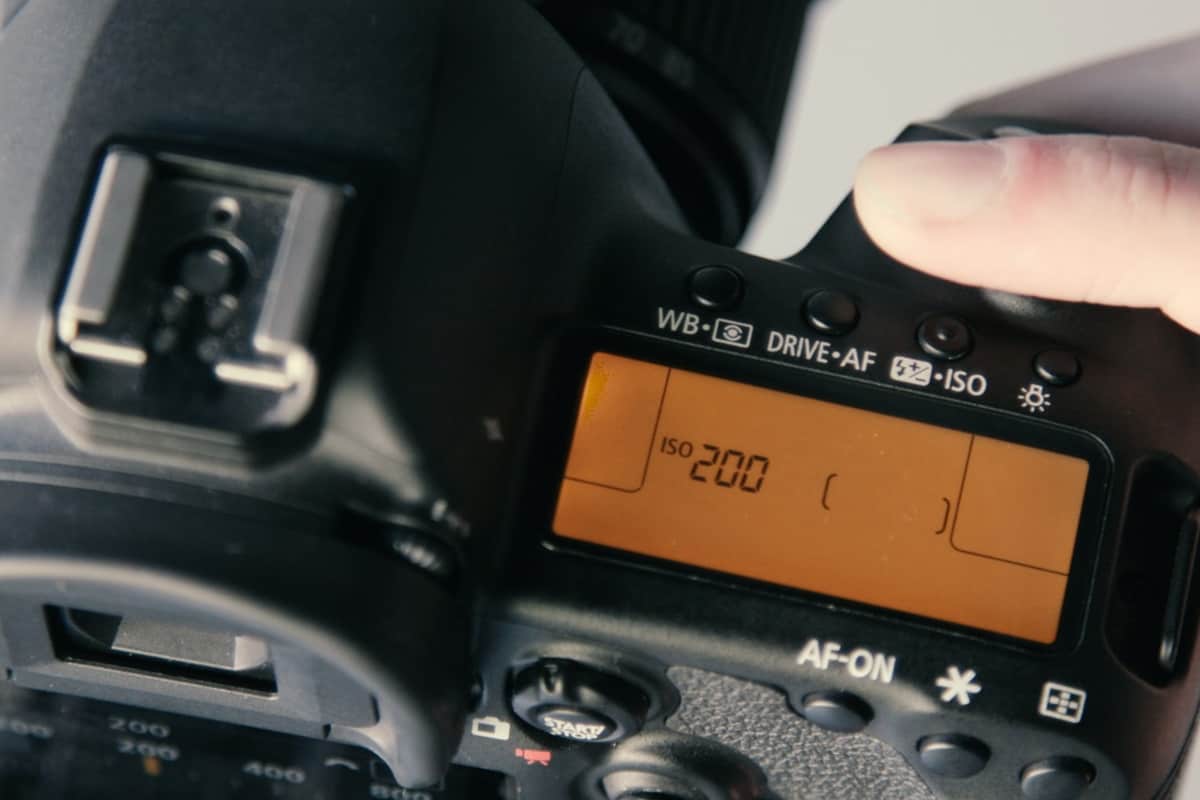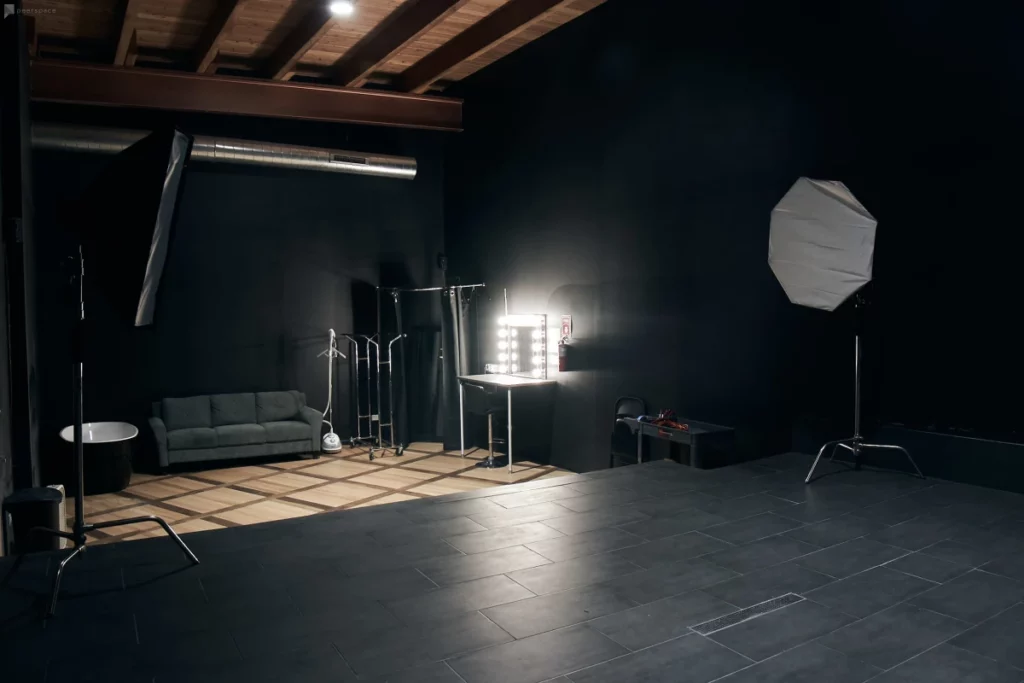
Source: Unsplash
Answered
Photoshoot locations on Peerspace typically cost $60 — $220 per hour.
- Where does ISO get its name?
- How ISO affects your photography
- Film grain and how it relates to ISO
- What happens on autofocus? ISO and digital cameras
- What does ISO stand for in photography? The big picture
- Practice your ISO game at a Peerspace photo studio
Have you ever wondered, “what does ISO stand for in photography?” If you’re reading this article, we’ll bet you have! And Peerspace is here to provide all the answers you need on the subject.
Just as we’re the largest online provider of hourly venue rentals, so we are happy to fill you in on crucial aspects of the art of photography. In fact, we’ll share photos from real photoshoot locations that you can book today to enhance your ISO skills and more. But let’s not get ahead of ourselves since you need to understand ISO before experimenting with it.
In photography, there are three basic elements that all work in tandem to control exposure. Shutter speed, f/stop, and ISO. That last one can be a little tricky to wrap your head around if you’re just starting out in photography or have only used automatic digital cameras in the past. So let’s get to the bottom of this key element of photography and understand once and for all: what does ISO stand for?
Where does ISO get its name?

In short, ISO is the term used to indicate “film speed” in traditional photography. But if you’ve ever done a quick Google search of the term, you may have been frustrated if you wanted to know what it literally stands for. For that, we need a quick lesson in international diplomacy and nerds.
ISO stands for International Organization of Standards. But wait, wouldn’t that be IOS? That’s the diplomacy part. Because it’s a global organization, it’d have a different acronym in different languages. So rather than going by many names, they settled on ISO for everyone to use. It’s even on their logo.
And what exactly does any of that have to do with photography? Well, that’s the nerd part. See, nerds who like to begin their contribution to dinner party conversations with the phrase “well technically…” got together and developed standards to describe photographic film’s sensitivity to light.
How ISO affects your photography

Now that we’ve got the history out of the way, we can look at what ISO means for the practical photographer. Wistia describes it succinctly as follows: “the lower the ISO, the darker your image will be; the higher the ISO, the brighter your image will be”. To make that a bit more concrete, let’s imagine an example.
Let’s say you want to experiment with astrophotography. Nothing fancy, no special telescope attachments, just a tripod, a camera, and a clear dark sky. To take such a picture, it’s best to think about your own eyes. When you go stargazing, it takes your eyes a bit to adjust, and as the first few minutes pass by, you can gradually see more stars. Why? Your pupils are dilating, letting in more light.
That’s an easy analogy to your camera’s aperture, the adjustable opening that controls the amount of light that comes in. Combined with shutter speed, the amount of time the aperture is open, you have now controlled the total amount of light coming in. That’s where ISO comes in.
According to Astro Backyard, you’ll want an ISO of anywhere from 400 all the way to 1600 for night photography. That’s because you want a high sensitivity to the very limited amounts of light coming in.
ISO can very simply be described as a film’s sensitivity to light. A low ISO like 100 is appropriate for bright daylight photos. Since you have plenty of light to work with in daylight settings, you will pair that with a short amount of time to have the aperture open.
Whether your passion is landscapes, portraits, or something else, learning all about symmetry photography can boost your skills.
Film grain and how it relates to ISO

These days, if you just search the phrase “film grain” on Google, you’ll get many results on how to artificially add it back into a crisply captured digital image or video for artistic effect. However, before it was a trendy tutorial in Photoshop, it was a real artifact of the imperfections of traditional photography.
Film grain is caused by the irregularities in photochemical particles that are manipulated by exposure to light. The higher the ISO, the more likely the grain will be noticeable in the final developed photo. It’s kind of like if you were looking at an image made of sand and zoomed in enough to see the individual granules. In modern media, you’re most likely to encounter it not in its natural form but added to a digital creation for “texture.”
What happens on autofocus? ISO and digital cameras

All this information is great if you’re using a traditional film camera with fully manual settings. But what exactly is a point-and-click automatic digital camera doing? It can seem like wizardry that with essentially no knowledge of photography you can still capture a beautiful picture. So what’s happening in the brains of a digital camera, and how does ISO come into play when there’s no physical film?
When the camera does all the work for you, we can broadly call that process autofocus, even though it’s doing a lot more than just bringing the image into focus. An internal sensor uses algorithms to determine how far to focus in the field of view. To make it simple, the camera’s computer does the math to make a very clever guess at what you want. B&H Photo has a fantastic guide on understanding everything having to do with focus. There, they explain in excellent detail all the sensors, motors, and mirrors that work in tandem to do their magic.
Cool, now we have a basic idea of how autofocus works. But what about ISO? In a digital camera, like say your phone, what was once a pile of different types of film is now a slider on your screen. For a deep dive into the technology, including the underlying math, check out this section of the film speed Wikipedia page. But put simply, it doesn’t change the amount of light you capture, only f/stop and shutter speed do that. Rather it digitally alters the brightness of what you’ve already captured.
The last thing to know about digital ISO is that a higher value will result in more “noise,” which is analogous to film grain, as we discussed earlier.
Next, check out texture photography: what to know and how to nail it.
What does ISO stand for in photography? The big picture

To bring it all together, ISO is the oddly-named way we describe film’s sensitivity to light. Since the advent of digital photography, the term has been borrowed from the traditional physical medium and translated into a digital setting. It’s a core element to understand if you want to elevate your photography game. With a little experimenting, you can quickly get a grasp on the best ISO for whatever lighting situation you’re working in. And by doing so, you can enhance your skills, whether you’re a hobbyist or a professional.
Practice your ISO game at a Peerspace photo studio

By now, you can answer the question, “what does ISO stand for in photography” yourself! Next, it’s time to put your newly acquired knowledge to use.
To do so, book a fantastic Peerspace location that allows you to play with light and get creative. As the largest online marketplace for hourly venue rentals, Peerspace can connect you to the creative spaces that bring your projects to life.
On our platform, you can book:
- Film and photo studios in Phoenix, AZ
- Designer homes with huge windows and vaulted ceilings in British Columbia
- Natural light lifestyle lofts in New York City, NY
- Glitzy rooftops in Nashville, TN
- Luxury multi-set production venues in Chicago, IL
- Abandoned buildings throughout Los Angeles and beyond
- And so much more!
All spaces are available to rent by the hour and are hosted by locals who want to help you fulfill your creative vision. Simply click a link, enter your location, and see what spaces are available.
Each space has its own dedicated listing filled with pertinent information, like the venue size, photos, description, price, and reviews from past renters. It’s the easiest way to book a creative space that suits your needs and budget.
What does ISO stand for in photography: conclusion

By now, you know all about what ISO stands for in photography and how it can affect your photos. We’ve also discussed how Peerspace is the easiest way to book fresh creative spaces to suit any photography project. Between your skills and the photoshoot location of your choosing, you’re well on your way to creating sensational images with the perfect balance of light and texture.
Also, be sure to check out our photography resources pages to discover everything you ever wanted to know about photography but didn’t know who to ask.
Find unique photoshoot locations on Peerspace
Get together somewhere better
Book thousands of unique spaces directly from local hosts.
Explore SpacesShare your space and start earning
Join thousands of hosts renting their space for meetings, events, and photo shoots.
List Your Space






